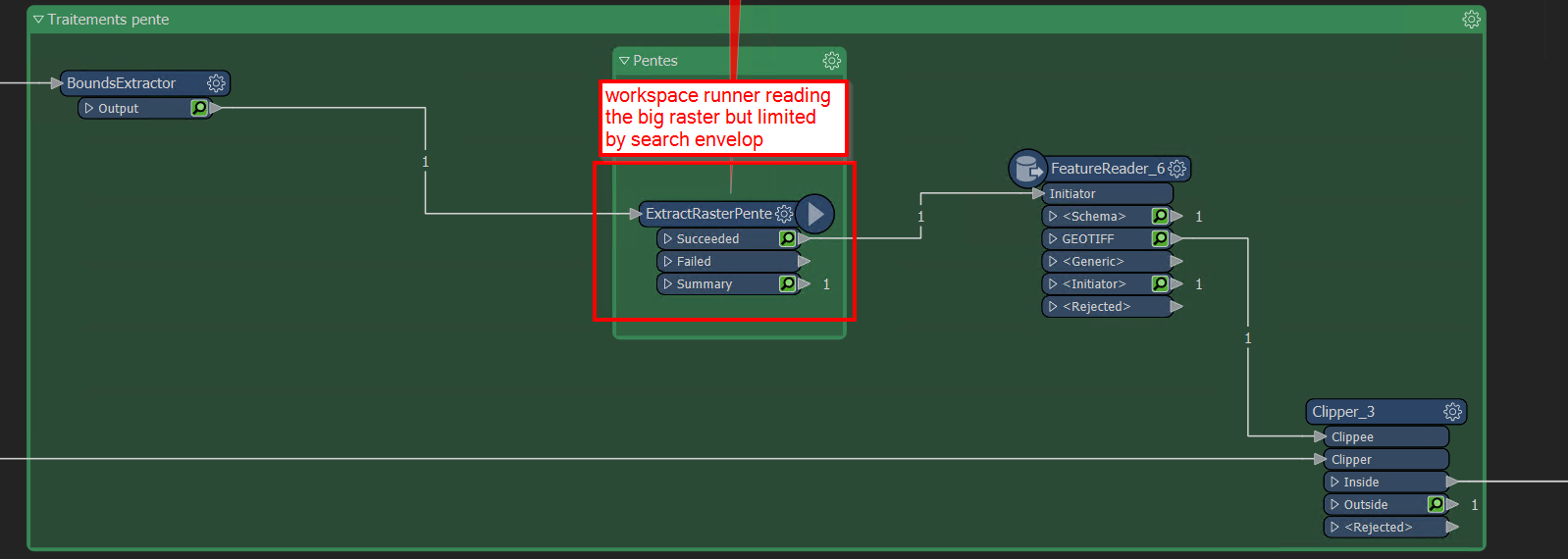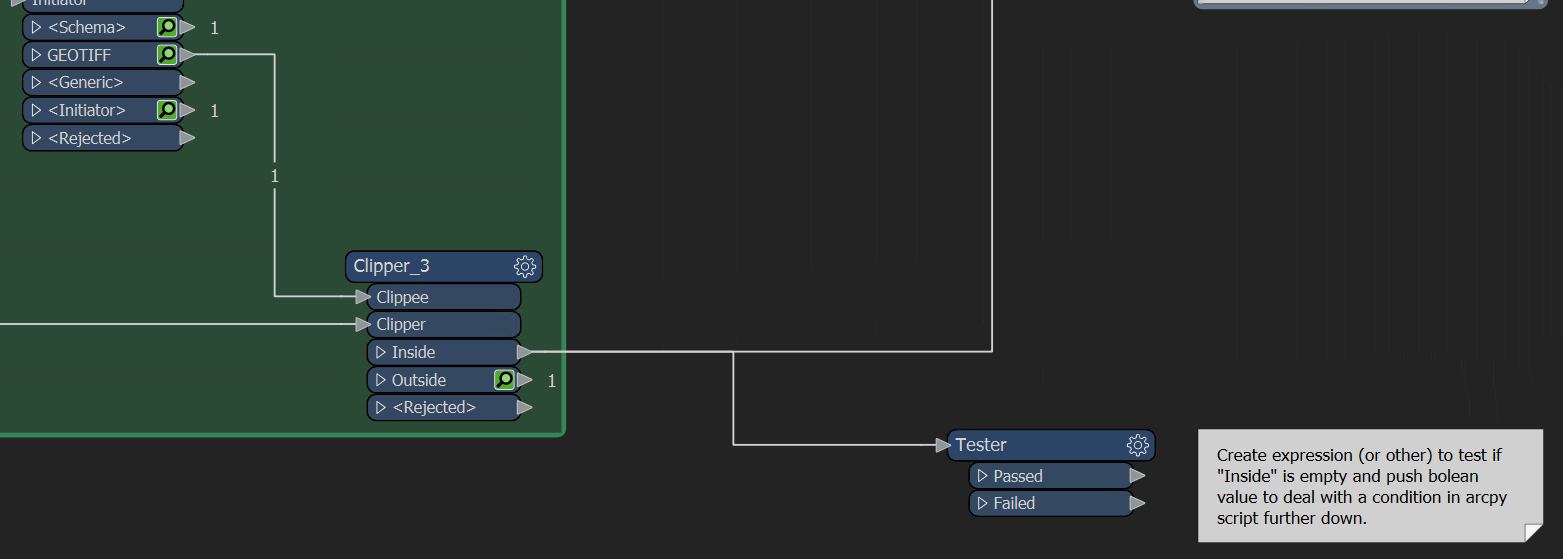Hello everyone,
I have this very large raster and a shapefile with polygons. My process is a looping one where the raster is clipped with each polygon. In order to avoid reading the whole raster everytime, I've created a subprocess that uses the polygon bounds directly in the search envelop of reader. Then, it is clipped.
 My problem arise when the polygon used for clipping is outside the raster extent. The "inside" port of the transformer is empty but the process continues. This output is supposed to be used later on in a script (arcpy custom transformer) to align many other rasters. But clearly all this fails because there is no raster.
My problem arise when the polygon used for clipping is outside the raster extent. The "inside" port of the transformer is empty but the process continues. This output is supposed to be used later on in a script (arcpy custom transformer) to align many other rasters. But clearly all this fails because there is no raster.
The best solution I have come up with would be to add a Tester or something after the transformer and create a bolean value which would allow me to deal with this empty raster directly in the script. However, I can't seem to find a way to do that.
 Mind me, I cannot use the "outside" port since I always have an extra part to cut off because of the reading bounds. I really need to be able to plug the tester on the "inside" port and be able to run it empty or not.
Mind me, I cannot use the "outside" port since I always have an extra part to cut off because of the reading bounds. I really need to be able to plug the tester on the "inside" port and be able to run it empty or not.
Does anyone have an idea? Thanks to this community!








